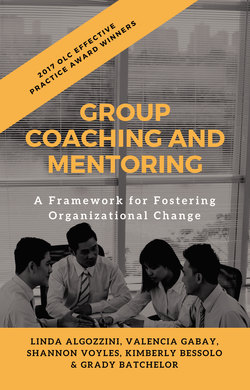Читать книгу Group Coaching and Mentoring - Linda Algozzini - Страница 8
На сайте Литреса книга снята с продажи.
Participatory Action Research
ОглавлениеMoving through this untested endeavor required a scholarly and thoughtful approach. Participatory Action Research (PAR) is an active way to solve a problem or to create intentional change dealing with the individual and community. It is built on continual cycles of action, reflection, and evaluation. The community of practice theoretical foundation became the avenue where the cycles of PAR were carried out throughout each stage of the Group Coaching and Mentoring Framework. Torbert’s (2004) Collaborative Developmental Action Inquiry (CDAI), was integrated into the framework at each level, specifically the reflection area of the cycle. Torbert (2004) notes the utilization of three levels of inquiry from the first, second, and third person points of view. This gave way to multi-level perspectives throughout the year and the different roles of the participants in the Group Coaching and Mentoring framework (Algozzini, Bessolo, Gabay, Voyles, & Batchelor, 2016).
PAR requires the involvement of all parties. It “strengthens knowledge and builds skills that can be used by the people experiencing the problem” (Chisholm, 2001, para. 3). With each cycle of action, reflection, and evaluation, PAR takes a participant to new levels of understanding.
PAR is a holistic approach to research, where self-discovery of participants (reflection) produces change (action) to the degree the participant is ready for change. The PAR process was optimal for this massive endeavor because the Group Coaching and Mentoring Framework needed the employees’ to be deeply involved. The work (action) of PAR must be done by those involved in the process. The process allows the work to be messy, organic, deliberate, and authentic with all reflections. It seeds a willingness to look at practices in new ways and with a variety of theories.
